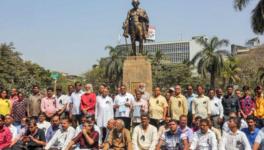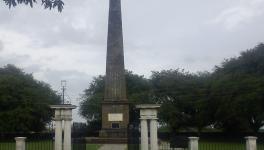Township Integration Policy- Development Zones Opened for Construction Lobbies in Maharashtra

The Devendra Fadnavis government is set to open the buffer zones around national parks, tribal lands and private forest lands for construction activities in what comes across as a move directed to benefit the clutch of industrialists.
The amended Integrated Township Policy surfaced on the state government website on November 22 and is currently under talks. Following the amendments and the revised regulations for integrated township, the developers will now be permitted to exploit anywhere between 3-3.6 times the existing building rights on green belts, depending on the size of the township. The draft modifications, proposed in February this year, are facing a tough battle with activists and environmentalists collectively opposing the ambitious plan of the BJP (Bharatiya Janata Party) government.
Shedding light on the proposed plan Stalin Dayanand, an environmentalist from Mumbai explained, “All the no development zones under the previous development plan have now been opened up for the developers threatening the environment under the guise of affordable housing.” He added, “The construction activity that will commence will expand into natural wetlands. These large patches of land are being opened up only for the construction lobbies.”
With the suggested modifications, the green belts in the city will now face the threat of survival. The new amendments permit that development projects can be undertaken on tribal lands and buffer zones of eco-sensitive belts, while restricting the development to the FSI (FLOOR Space Index) permissible for such plots and imposing a condition that a prior permission from the relevant authorities will be required.
Speaking with NewsClick, Yash Marwa, activist with Aarey forest movement said, “The development plan of Mumbai is an ambitious one that is scheduled to be finished by 2035. The plan had been delayed by 5-10 years because the aligned efforts of the environmentalists had stalled the anti-environment and anti-people development. The modus operandi of the Fadnavis government has been to subvert all opposition voices, any objections are invited primarily a week before.”
The opposition to the integrated township policy is gaining momentum due to the spotlight on the Navi Mumbai SEZ (Special Economic Zone) project in the city. Explaining the larger picture, Marwa added, “It is important to remember that this is not the only project coming up in Mumbai. The Delhi- Mumbai industrial corridor, the bullet train project, eight-lane highway project- all are building up to an environmental catastrophe with the space for the buffer zones now being opened up for construction purposes. The lakes and wetlands are being taken over along with this, there is also large-scale destruction of the aquifers.”
Under the proposed policy, tribal lands in Mumbai can also be used for such townships, provided the developer obtains permission under the Maharashtra Land Revenue code. The new policy also states that development of townships in zones earmarked for afforestation may also be allowed, with a mere no objection certificate. Further increasing the dangers of adverse ecological consequences, development has also been allowed on private forest land once the concerned collector changes its reservation. The flood lines and flood zones- measures to prevent floods in times of increasing water levels are also running a risk of being subverted.
Justifying the move, the Fadnavis government has contended that the revision was “needed to meet the growing housing demand.” The urban development department has argued that “increasing construction rights on green belts contained in a township would lessen the demand for diversion of more agricultural lands for construction purposes.”
Reacting to this Stalin Dayanand said, “The claims of the government do not seem to hold any substantial ground when the situation is examined from an urban planning perspective. It will end up only sweetening the deal for township developers.”
Implications of the Amended Norms
Under the prevalent norms, an FSI of built-up area to total plot area of 1.7 is permitted for townships in residential or urbanised zones, whereas the FSI on green belts is restricted to 0.6. But the revised norms have done away with this distinction. Depending on the size of the township, the new norms allow developers to build up to 2.2 times the plot size in any zone. The government has also withdrawn the rider that 2 per cent of built-up amenity space should be handed over free-of-cost to the local body of the area.
The threat to the loss of green cover and buffer zones has become more real as official statistics have revealed that 31 out of 33 township projects approved have come up on green belts. None of these have been granted occupation certificate so far, while 17 have gone into construction.
Get the latest reports & analysis with people's perspective on Protests, movements & deep analytical videos, discussions of the current affairs in your Telegram app. Subscribe to NewsClick's Telegram channel & get Real-Time updates on stories, as they get published on our website.
























